Test – Arctic Cooling Accelero Hybrid III 140: Specs | Price | CPU | Profitability| Hashrate| best Coins | Config | Advantage (Pros) and Disadvantages (Cons) and other important features that will help you make better decision.
After testing an excellent Accelero Xtreme IV (which you can read here) I return to Arctic Cooling with the latest in their graphics card cooling system, I named the Accelero Hybrid III 140! Hybrid because unlike the Xtreme IV which is 100% air cooled, the latest one comes with a 140mm AIO watercooling kit. For some time now, manufacturers have been offering kits for cooling our dear graphics card using an existing AIO water-cooling system (like the Kraken G10 from NZXT for example, which I tested here), Artic Cooling offers a product all-in!
Note that 7 models are available, R9 290 / 290X, R9 280 / 280X, GTX 780, GTX 770, GTX980, GTX980 / 980 Ti and generic, the difference will be at the level of the VRMs radiator which is different on each model. Today’s test model will be the one for an R9 290.
Offered at a price of 119.90 € this is a certain amount to keep a graphics card cool, but for someone who would like to install a water cooling system it will come back. very clearly less expensive than a “custom” circuit, let’s see what the beast has in the belly!
Specification: Hashrate – Arctic Cooling Hybrid III 140
| Arctic Cooling Hybrid III 140 | |
|---|---|
| Dimensions | 17 (L) x 14 (W) x 5.2 (D) cm (Watercooling radiator + fan) 12 (L) x 9.1 (W) x 1.2 (D) cm (Rear radiator) |
| Weight | AIO kit: 649 g Rear radiator: 125 g 14 cm fan: 147 g 12 cm fan: 52.5 g |
| Fans included | 1 x 8 cm “slim” PWM 1 x 14 cm PWM |
| Cooling capacity | 300 Watts |
| Compatible graphics cards | According to models: R9-290 (X) R9-280 (X) GTX 780 GTX 770 GTX 980 GTX 980 (Ti) Generic |
| Guarantee | 2 years |
| Rate | 119.90 € |
As we can see the dimensions of the AIO water cooling kit are standard for a 140mm version, 2.7 cm thick for the radiator and 2.5 cm thick for the fan for a total of 5.2 cm, in addition to this it is necessary to provide 1.2 cm behind the graphics card in order to place the radiator there which will cool the GPU and memory chips from the rear.
Regarding the weight everything is well detailed at Arctic Cooling, 649g for the water-cooling kit itself (without the fan), 125g for the rear radiator as well as 147g for the 14cm fan and 52.5g for the small 8 cm which will be used to cool the VRMs.
The Accelero Hybrid III 140 sees its maximum cooling capacity established at 300 watts, like the Xtreme IV, which will leave room for a large number of graphics card models (say all cards on the market), we can anyway the see by taking a look at the compatible models, ranging from the GTX 770 to the very greedy R9 290X (see the product sheet here).
The price as I said above is around 120 €, but with a warranty that is only 2 years, it could have been longer to reassure future buyers as much as possible.
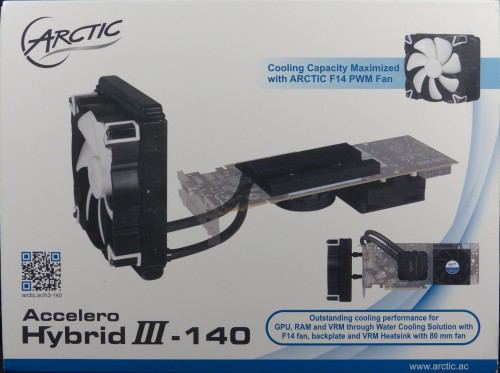
Arctic Cooling has definitely forgotten its transparent plastic boxes, and that’s not a bad thing! We take the colors of the brands here namely white and dark blue, a photo of the product on the front face, the logo of the brand, we also learn that the fan is an F14 PWM and that these gentlemen have taken a be particular to cool the VRMs as best as possible (which is always the black point in third-party solutions).
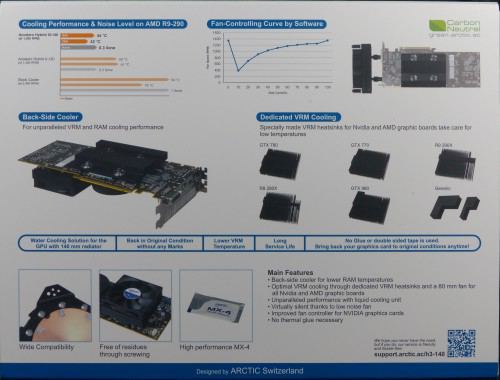
At the rear we are entitled to graphics showing the temperature difference between the original cooler and the Accelero Hybri III 140 on an R9 290, the ventilation curve (which can be modified via software), the VRM radiator which differs according to the models as well as a listing of the main strengths of the beast.
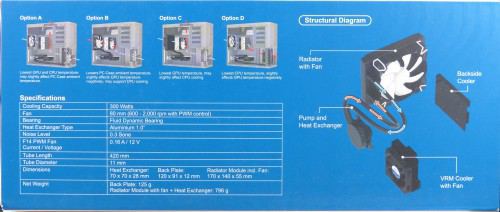
On the side there is a small table showing the main technical characteristics as well as some diagrams showing the different possible placements of the radiator, it does not eat bread and can be useful 🙂
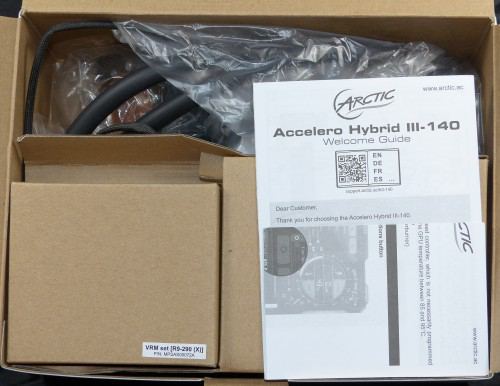
In the box everything is well packaged, all the accessories are small individual boxes and nothing wanders inside, also the AIO kite itself is in bags to protect it from any scratches.
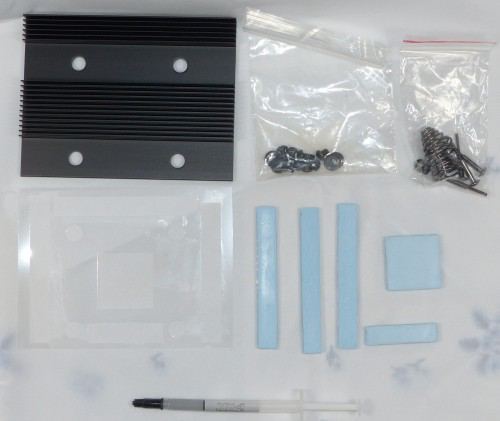
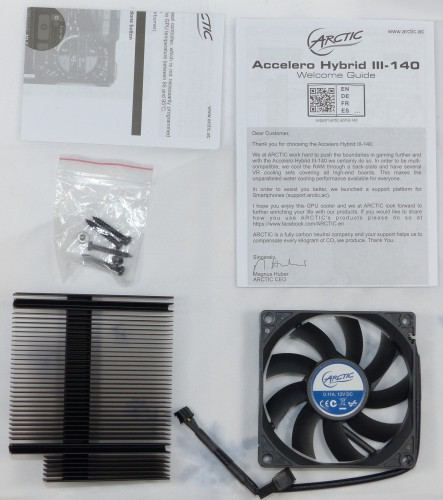
The bundle consists of:
- 1 x Arctic Cooling Accelero Hybrid III 140 cooler and 14 cm fan
- 1 x back cooling plate and its plastic to avoid contact of metal and PCB
- 5 x cooling pads for the back of the graphics card (the blue bands)
- The screws necessary to secure the kit to the GPU
- 1 x Tube of Arctic Cooling MX-4 Thermal Paste
- 1 x radiator for VRM (R9 290 / 290X in my case)
- 1 x 8 cm “slim” fan for the VRM heatsink
- The screws necessary for the VRM part
- Manuals
As we can see the bundle is really full, Arctic Cooling has thought of everything so that the buyer does not find himself stranded during the installation, everything has been studied in the smallest details, we are even entitled to a tube of thermal paste that was not present in the Accelero Xtreme IV (it was pre-applied).

Here is the beast! As you can see we are here with an AIO water cooling kit as we can see everywhere for processors, they look like two drops of water! The build quality is very good here that said at all levels, the fan cable is provided with a very good quality sheath as well. Let’s take a closer look at all of this.
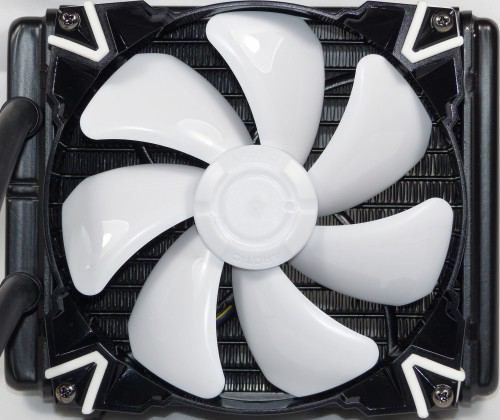
The fan is an F14 PWM of the brand reworked for the occasion, pale white with small white rubber edges in the corners to give it a better look and dampen any vibrations. The build quality is very good here, even if we do not reach the level of the “premium” fans on the market.

As we can see the build quality is not lagging behind here, nothing that changes from another AIO water cooling kit though.
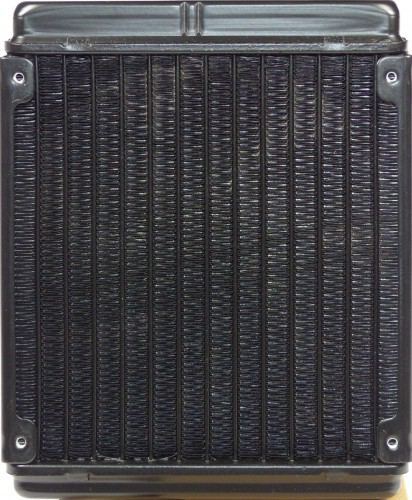
Aluminum fins, as in any good self-respecting AIO water-cooling kit (very few have copper fins, which transmit heat better).
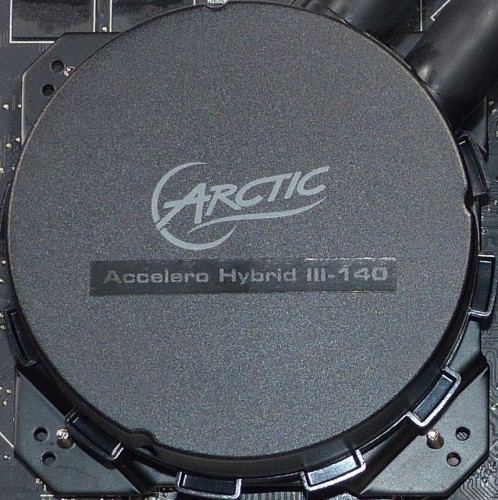
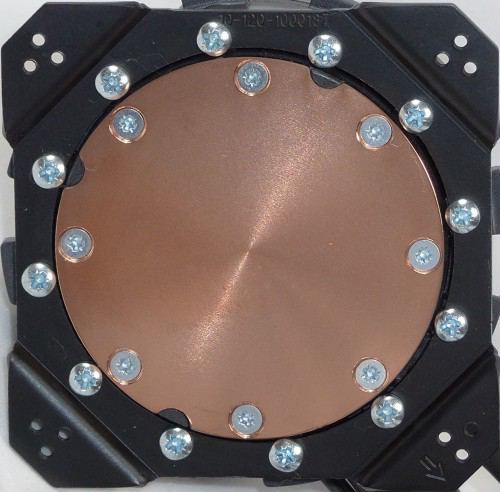
The top of the waterblock is made of black plastic with the logo of the brand and the model, you never know if someone was looking directly at the GPU;), the build quality is excellent here. The cold plate is made of copper to allow maximum heat transfer, no thermal paste pre-applied here you will have to do it yourself!
No more chatter, it’s time to ride the beast!
The fateful moment has arrived! Changing the cooling system of a graphics card can be perilous, depending on the product to be installed (I wrote an article here on this subject). Before starting, please note that in most cases the change will end the warranty of your graphics card, and that I accept no responsibility for any damage that could be caused by installing the Accelero Hybrid III 140 if you follow my instructions. installation!
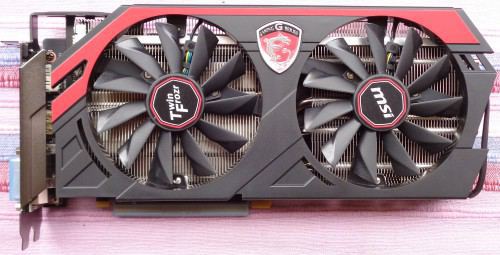
Today’s guinea pig will be the R9 290 Gaming OC from MSI (tested here), a card with a rather high consumption that will be perfect! The original cooler is already very good, we will see how the Accelero Hybrid III 140 takes care of the small R9 290!
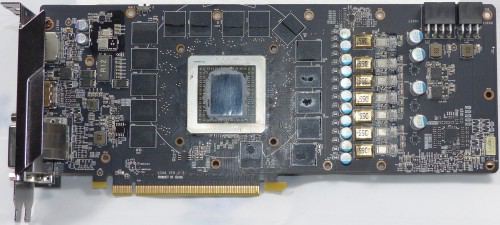
First of all you have to get down to removing the original cooler, nothing complicated, just remove all the screws on the back and gently remove the cooler. The only problem being the back plate which is glued to the ends, it is necessary to gently remove all this without too much force 😉
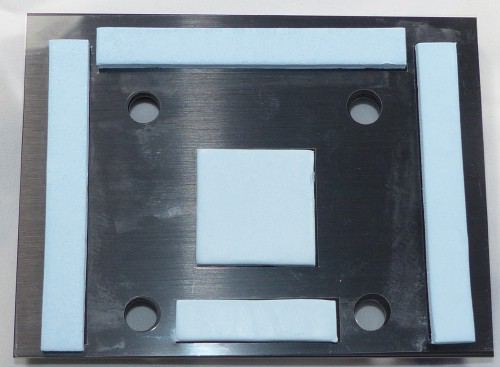
First step, put the thermal pads on the radiator (which were not put on my copy, maybe they will be put on yours!) Which will be placed behind the graphics card, as in the photo above.
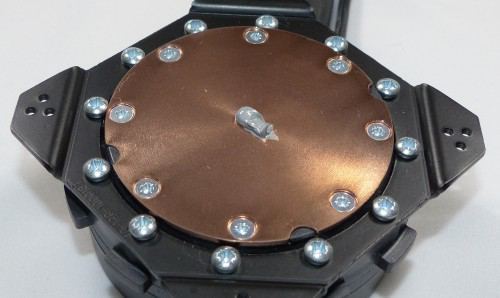
We continue by putting a small grain of thermal paste rice on the copper part of the waterblock. Once this is done, the graphics card must be placed over the waterblock, taking care to orient the pipes towards the connectors of the graphics card screens and not the power connectors, otherwise there will be a problem installing the VRM radiator.
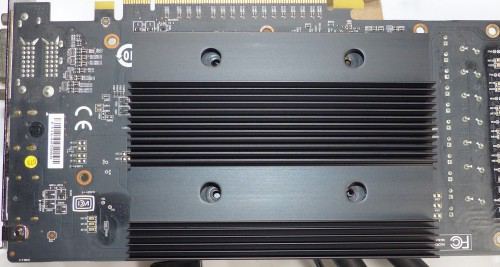
Then place the back plate on the graphics card, making sure to line up the holes with those of the graphics card and the waterblock.
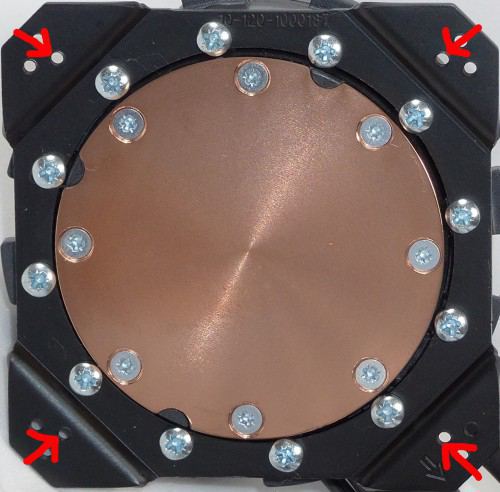
Note that there are several fixing holes, for the R9 290 it is necessary to use those closest to the copper base, as shown in the photo.

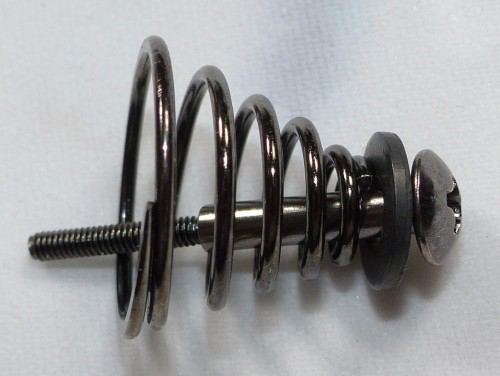
Now you have to “assemble” the screws that will hold the waterblock and the back plate of the graphics card, as above, I’m not drawing you!
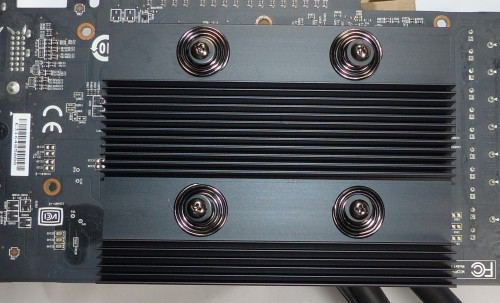
Now comes the part that almost got the better of my nerves, align the 3 holes and put the screws in place. The first is really a hell to put, the card turns with thermal paste and you have to press a minimum to come into contact with the thread, suddenly everything moves and it is really not easy to align it all. Once the first installation on the other hand everything goes rather smoothly, it is necessary to make sure to screw little by little and not completely one by one.
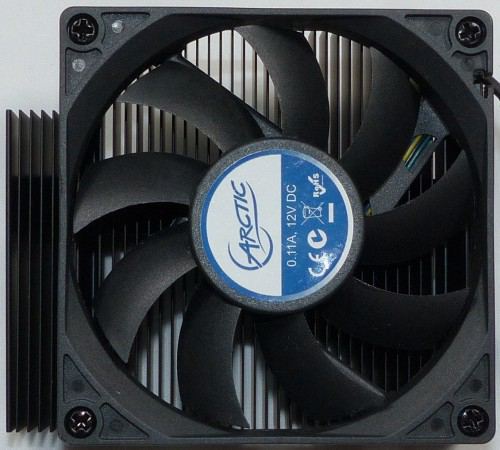
Now you have to place the 8 cm fan on the VRM heatsink, using the 4 screws provided. Once done, all you have to do is screw it in using the 2 screws provided on the back of the graphics card.
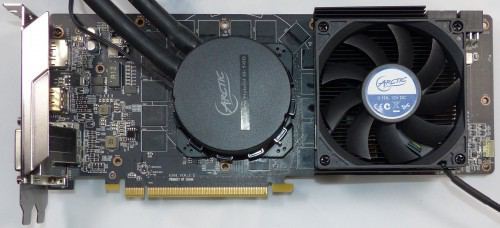
And here is the work! As we can see the VRM part is entitled to a huge cooling, an excellent point for Arcti Cooling.

Even with the watercooling system the card takes up space, in fact the heatsink on the VRMs exceeds 2 slots thick and the card needs a slot at the back for the heatsink. At least everything will necessarily be well cooled, and that is the main thing!
The test platform
The configuration used during the tests is as follows:
- Processor : Intel Core i4670K @ 4 Ghz
- Graphics card : MSI R9 290 Gaming OC (tested here)
- Motherboard : Gigabyte Z87-UD5H TH (tested here)
- Memory : Kingston HyperX Fury 2 x 4 GB 1866Mhz (tested here)
- Disque dur: WD Raptor 150 Go
- Power supply : be quiet E9 580CM (tested here)
- Operating system : Windows 8.1 64bits
The test protocol
The temperatures will be read after 30mins of FurMark 1.13 which should correspond to the maximum temperature achievable by the graphics card in extreme conditions.
For the purposes of the noise pollution test, the coolers will be tested twice:
- The fans connected in PWM managed by the graphics card
- Fans connected in PWM managed by MSI Afterburner via a custom ventilation profile
- The fans at full blast to see the maximum performance achievable
As we will see, since the ventilation is not the same as the original cooler, the temperatures of the different components will be changed, particularly for VRMs, which is why a personalized ventilation profile will be used.
The temperatures
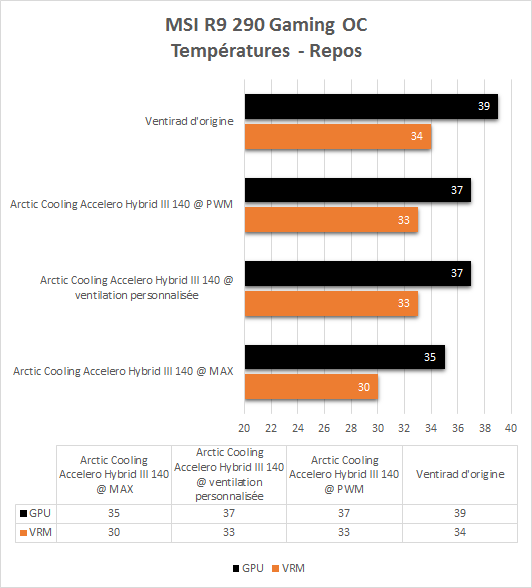
At rest as we can see the results are better than with the basic cooling system, but we can not really draw any conclusions before seeing what this gives in load, knowing that even the basic cooling system holds the menu in the fridge 🙂

Well there the result is clear, we go from 90 ° for the GPU with the original cooler to 65 ° with the Arctic Cooling Accelero Hybrid III 140 in PWM mode, 63 ° with a personalized ventilation and 60 ° at the maximum. The VRMs are also very happy with the trip, going from 94 ° to 76 ° in PWM mode, 68 ° in personalized ventilation and 59 ° at the maximum.
To sum up the Accelero Hybrid III 140 turns the MSI cooling system upside down in all directions, even if the latter is really not bad 😉
Noise pollution
So there, I took 2 readings, why? Quite simply because the pump is placed on the waterblock and there is a fan next to it (that of the VRMs) in addition to the fan installed on the radiator. As we will see the readings are not identical between the 2 elements, suddenly this will allow to see the difference.
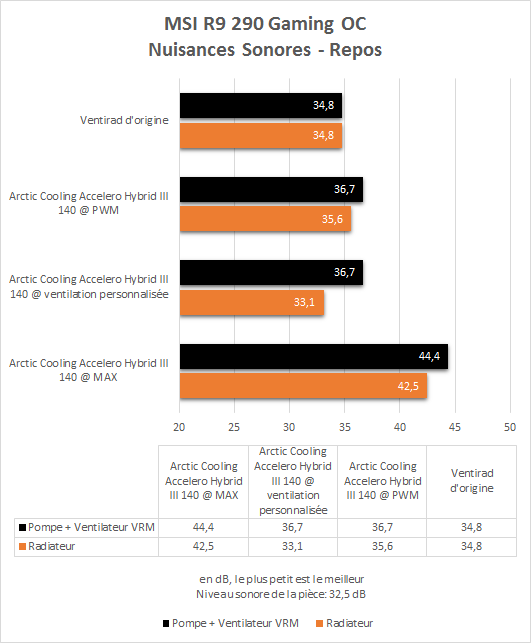
This is where we see that the 2 readings are not superfluous, indeed with the original cooling system we are at 34.8 dB, which is very discreet and will not be heard in 99% of cases in a closed PC. On the other hand with the Arctic Cooling Hybrid III 140 the results are quite different, the radiator fan is very clearly silent with 35.6 dB managed by the graphics card, 33.1 dB with the personalized mode (therefore which runs less quickly at rest) and 42.5 dB at most, for a fan that can go up to 1300 RPM we are in the nails and there is absolutely no noise to deplore!
On the other hand, the noise pollution generated by the pump brings all this up to 36.7 dB, which is unfortunately the case for a very large majority of AIO water-cooling kits on the market, especially since it is not possible to regulate all this since it is powered by molex. Well, let’s put it into perspective though because the noise is not huge but it is present and audible, a real shame because that would have made the beast almost inaudible.
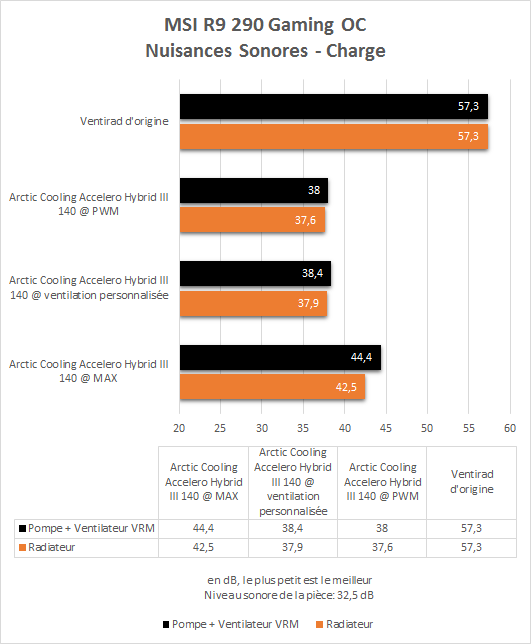
In load, it’s clearly a big slap, when the original MSI cooling system goes up to a big 57.4 dB under Furmark, the Arctic Cooling is satisfied with around 38 dB in PWM mode or in custom ventilation for a maximum. of 44.4 dB for the VRM fan and 42.5 dB for the radiator fan. There I think everyone agrees, the system from Artic Cooling is clearly more efficient there is no doubt.
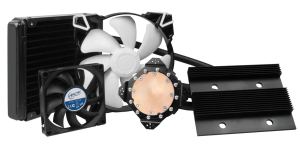
Here we are at the end of this test, what to say about the Arctic Cooling Accelero Hybrid III 140?
Anyone looking to make their “gaming” PC silent knows that the graphics card is one of the hardest components to silence as it gets hot, and of course, when you say heat, increase the speed of the fans in the end. end up with a machine that is not as quiet as expected. Arctic Cooling is part of one of those companies that wants good for your ears and as much to say that with the Accelero Hybrid III 140 the bet is real successful!
The performances are light years away from the original coolers of graphics cards, even the “custom” solutions, the temperatures drop drastically under load, and not only for the GPU as we can unfortunately see too often in the competitors who abandon them. VRM, here they are really very well cooled and will be doing even better than with the original system, a very good fit for these men from Arctic Cooling.
The sound level on the other hand is mixed, indeed even if in load it is very much better than the original system at rest, a small thing comes to tarnish the note a little, the noise of the pump, even if it is not very high it will make the card audible when idle and that’s a shame!
The only small negative point besides the noise of the pump comes from the assembly which is a bit tedious when installing the first GPU screw, after that there is no real problem but a tip, go slowly and don’t get upset!
The price reflects the services offered and the quantity of material provided. Indeed the Hybrid III 140 offers a 140 mm AIO water-cooling kit, a 14 cm fan, one (or more depending on the version) large radiator for VRMs with its 8 cm fan as well as a radiator to be placed at the rear of the card, 119.90 € for all this is not necessarily very high in the end, the price to pay for top-notch performance.
Advantages
- Silence in charge
- Performances
- VRMs are not forgotten
- Build quality
- Bundle
Disadvantages
- Montage
- Slight noise from the pump
A big thank you to Arctic Cooling who allowed me to do this test.















